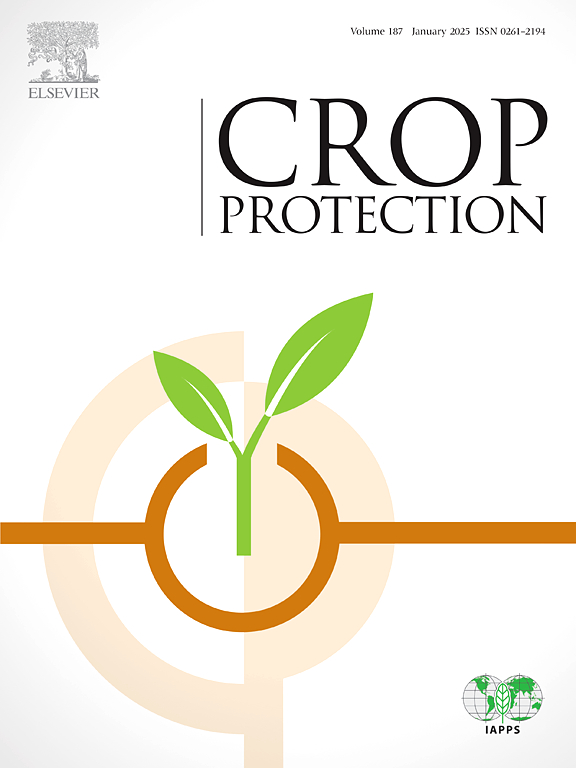Water stress and tomato yellow ring orthotospovirus (TYRV) infection impact the demographic parameters of the western flower thrips, Frankliniella occidentalis (Thysanoptera: Thripidae)
IF 2.5
2区 农林科学
Q1 AGRONOMY
引用次数: 0
Abstract
The impact of water stress on tripartite plant-pathogen-vector interactions represents a complex and predominantly underexplored area within the study of plant-insect relationships. Tomato yellow ring orthotospovirus (TYRV) is an emerging threat to tomato crops, causing significant yield losses. Frankliniella occidentalis, commonly referred to as western flower thrips (WFT), is a key pest of tomato crops and is the primary vector of TYRV. In this study, we investigated how water stress (WS) and TYRV infection influence the demographic parameters of WFT. These results indicated that viral infection significantly enhanced adult longevity, oviposition period, and fecundity. Nonetheless, the demographic analysis revealed that severe WS conditions adversely affected the effects of TYRV on thrips populations, leading to a decline in overall fitness. Although the highest values of r and λ were recorded under moderate WS conditions, the observed differences in r and λ values were not statistically significant. R0 experienced a negative impact from WS, indicating potential long-term consequences for population sustainability. Overall, TYRV infection partially mitigated the detrimental effects of WS on WFT biological traits, specifically under moderate stress conditions, indicating a complex interplay between host stress and viral infection. This study provides insights into the ecological dynamics of F. occidentalis under climate change scenarios, emphasizing the importance of understanding host-virus interactions in pest management strategies. These findings suggest that integrated pest management approaches should consider both abiotic stressors and viral infections to control thrips populations and mitigate crop damage effectively.

求助全文
约1分钟内获得全文
求助全文
来源期刊

Crop Protection
农林科学-农艺学
CiteScore
6.10
自引率
3.60%
发文量
200
审稿时长
29 days
期刊介绍:
The Editors of Crop Protection especially welcome papers describing an interdisciplinary approach showing how different control strategies can be integrated into practical pest management programs, covering high and low input agricultural systems worldwide. Crop Protection particularly emphasizes the practical aspects of control in the field and for protected crops, and includes work which may lead in the near future to more effective control. The journal does not duplicate the many existing excellent biological science journals, which deal mainly with the more fundamental aspects of plant pathology, applied zoology and weed science. Crop Protection covers all practical aspects of pest, disease and weed control, including the following topics:
-Abiotic damage-
Agronomic control methods-
Assessment of pest and disease damage-
Molecular methods for the detection and assessment of pests and diseases-
Biological control-
Biorational pesticides-
Control of animal pests of world crops-
Control of diseases of crop plants caused by microorganisms-
Control of weeds and integrated management-
Economic considerations-
Effects of plant growth regulators-
Environmental benefits of reduced pesticide use-
Environmental effects of pesticides-
Epidemiology of pests and diseases in relation to control-
GM Crops, and genetic engineering applications-
Importance and control of postharvest crop losses-
Integrated control-
Interrelationships and compatibility among different control strategies-
Invasive species as they relate to implications for crop protection-
Pesticide application methods-
Pest management-
Phytobiomes for pest and disease control-
Resistance management-
Sampling and monitoring schemes for diseases, nematodes, pests and weeds.
 求助内容:
求助内容: 应助结果提醒方式:
应助结果提醒方式:


